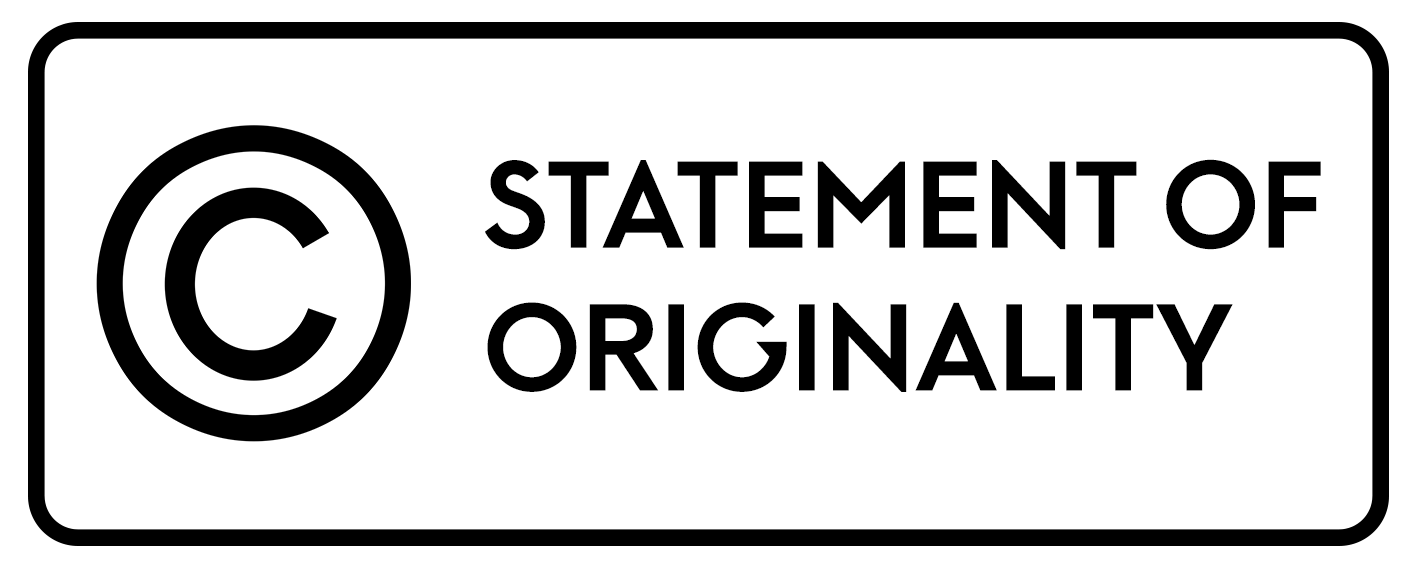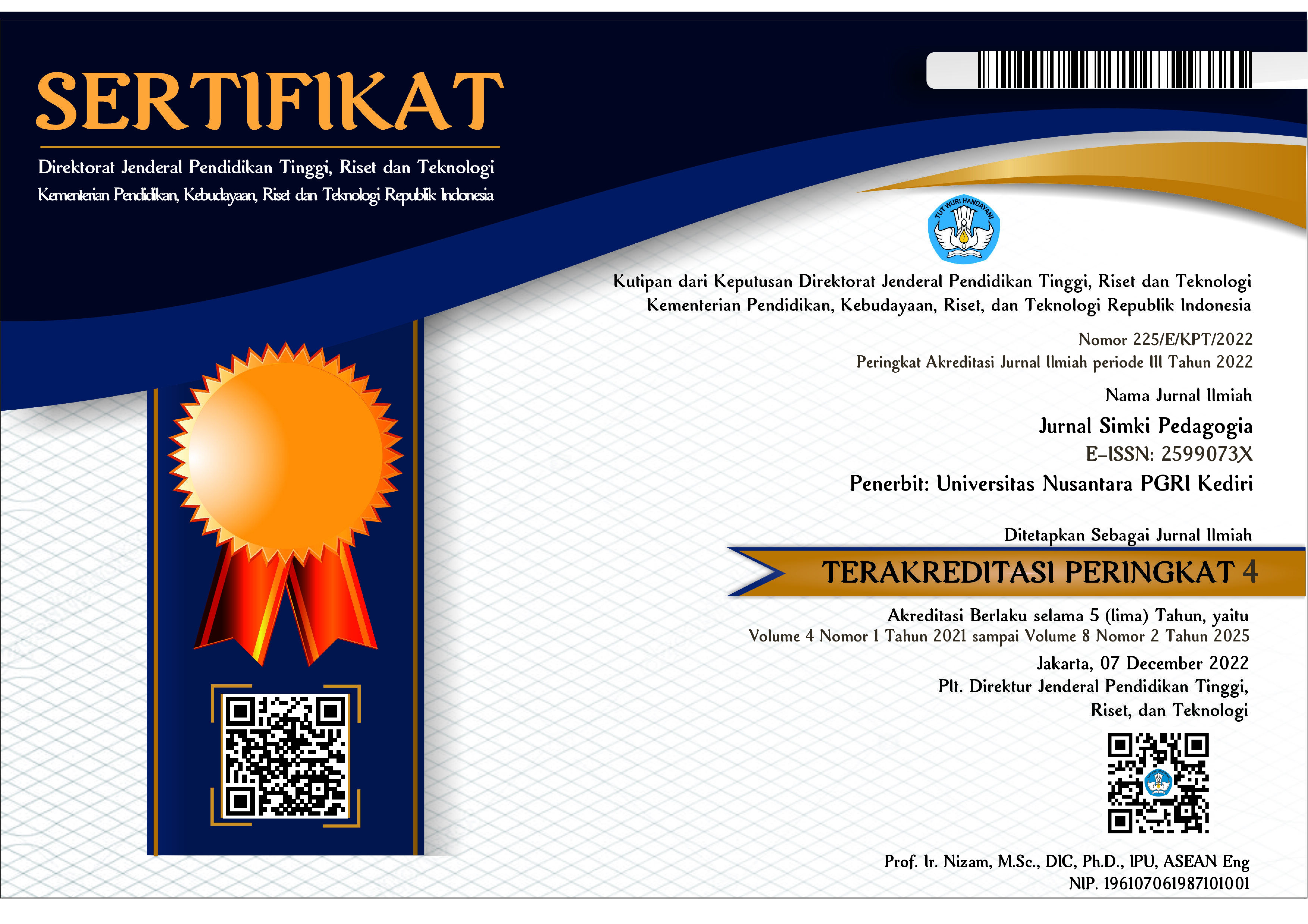Trends, Opportunities, and Challenges of Using WhatsApp in Learning: A Literature Review
 Abstract views: 1268
,
Abstract views: 1268
,
 PDF downloads: 704
PDF downloads: 704
Abstract
WhatsApp is a widely used and widely used communication platform in education. The main objectives of this literature review are to identify the trends and challenges associated with using WhatsApp in education, explore the benefits and opportunities for students and teachers in using this platform for learning, and understand the challenges and limitations of using WhatsApp within the classroom setting. The literature was obtained through various databases using keywords related to WhatsApp and education. It is important for educators and administrators to be aware of the trends, opportunities, challenges, and opportunities associated with the using of WhatsApp. The increased usage of WhatsApp as a tool for communication and collaboration between students and teachers is one trend that has been identified in the research. The results of this literature review will contribute to the field of education and technology by highlighting the potential of WhatsApp as a tool for learning and providing insights on how it can be effectively integrated in classroom instruction. The article also discusses the need to consider privacy and security issues when using WhatsApp in education, and provides suggestions for further research.
Downloads
References
Aizenkot, D., & Kashy-Rosenbaum, G. (2021). Cyberbullying Victimization in WhatsApp Classmate Groups among Israeli Elementary, Middle, and High School Students. Journal of Interpersonal Violence, 36(15–16), NP8498–NP8519. https://doi.org/10.1177/0886260519842860
Alubthane, F., & Alyoussef, I. (2021). Pre-Service Teachers’ Views about Effective Use of the Whatsapp Application in Online Classrooms. TOJET: The Turkish Online Journal of Educational Technology, 20(1), 44–52. https://eric.ed.gov/?id=EJ1290794
Anderson, K. E. (2016). Getting acquainted with social networks and apps: WhatsApp-ening with mobile instant messaging? Library Hi Tech News, 33(6), 11–15. https://doi.org/10.1108/LHTN-07-2016-0032
Andujar, A., & Franco Rodriguez, J. M. (2019). WhatsApp and Jitsi to Foster Student Engagement in an American-Spanish Telecollaboration Exchange. In Recent Tools for Computer-and Mobile-Assisted Foreign Language Learning (pp. 60–78). IGI Global. https://doi.org/10.4018/978-1-7998-1097-1.ch003
Annamalai, N. (2019). Using whatsapp to extend learning in a blended classroom environment. Teaching English with Technology, 19(1), 3–20. https://eric.ed.gov/?id=EJ1204549
Arifani, Y. (2019). The application of small whatsapp groups and the individual flipped instruction model to boost EFL learners’ mastery of collocation. Call-Ej, 20(1), 52–73.
Azizur Rahman, S., Al Marzouqi, A., Variyath, S., Rahman, S., Rabbani, M., & Iqbal Ahamed, S. (2020). Effects of Social Media Use on Health and Academic Performance among Students at the University of Sharjah. Proceedings - 2020 IEEE 44th Annual Computers, Software, and Applications Conference, COMPSAC 2020, 711–716. https://doi.org/10.1109/COMPSAC48688.2020.0-176
Bajpai, R., Sharma, R. K., & Vashisht, R. (2022). Identification of peak hour and active member on WhatsApp group using Python. 2022 Fifth International Conference on Computational Intelligence and Communication Technologies (CCICT), 174–177. https://doi.org/10.1109/ccict56684.2022.00042
Bishai, M. F. (2022). Innovation in a Time of Making Do: COVID-19 and the Digital Divide through the Lens of a Mobile Phone Mathematics Program in South Africa. In Belonging in Changing Educational Spaces (pp. 256–275). Routledge.
Bouhnik, D., & Deshen, M. (2014). WhatsApp Goes to School: Mobile Instant Messaging between Teachers and Students. Journal of Information Technology Education: Research, 13, 217–231. https://doi.org/10.28945/2051
Broadbent, J., & Lodge, J. (2021). Use of live chat in higher education to support self-regulated help seeking behaviours: a comparison of online and blended learner perspectives. International Journal of Educational Technology in Higher Education, 18(1), 1–20. https://doi.org/10.1186/s41239-021-00253-2
Cansoy, R. (2017). Teachers’ Professional Development: The Case of WhatsApp. In Journal of Education and Learning (Vol. 6, Issue 4, p. 285). https://doi.org/10.5539/jel.v6n4p285
Cetinkaya, L. (2017). The impact of whatsapp use on success in education process. International Review of Research in Open and Distance Learning, 18(7), 59–74. https://doi.org/10.19173/irrodl.v18i7.3279
Dahdal, S. (2020). Using the WhatsApp Social Media Application for Active Learning. Journal of Educational Technology Systems, 49(2), 239–249. https://doi.org/10.1177/0047239520928307
Díaz-Ramírez, J. (2020). Gamification in engineering education – An empirical assessment on learning and game performance. Heliyon, 6(9), e04972. https://doi.org/10.1016/j.heliyon.2020.e04972
Gachago, D., Strydom, S., Hanekom, P., Simons, S., & Walters, S. (2015). Crossing Boundaries: Lecturers’ Perspectives on the Use of Whatsapp To Support Teaching and Learning in Higher Education. Progressio: South African Journal for Open and Distance Learning Practice, 37(1), 172–187. https://doi.org/10.25159/0256-8853/579
Garritty, C., Gartlehner, G., Nussbaumer-Streit, B., King, V. J., Hamel, C., Kamel, C., Affengruber, L., & Stevens, A. (2021). Cochrane Rapid Reviews Methods Group offers evidence-informed guidance to conduct rapid reviews. Journal of Clinical Epidemiology, 130, 13–22. https://doi.org/10.1016/j.jclinepi.2020.10.007
Jabbar, J., Malik, S. I., AlFarsi, G., & Tawafak, R. M. (2021). The Impact of WhatsApp on Employees in Higher Education. In Studies in Systems, Decision and Control (Vol. 295). https://doi.org/10.1007/978-3-030-47411-9_34
Jailobaev, T., Jailobaeva, K., Baialieva, M., Baialieva, G., & Asilbekova, G. (2021). WhatsApp Groups in Social Research: New Opportunities for Fieldwork Communication and Management. BMS Bulletin of Sociological Methodology/ Bulletin de Methodologie Sociologique, 149(1), 60–82. https://doi.org/10.1177/0759106320978337
Kiger, M. E., & Varpio, L. (2020). Thematic analysis of qualitative data: AMEE Guide No. 131. Medical Teacher, 42(8), 846–854. https://doi.org/10.1080/0142159X.2020.1755030
Madge, C., Breines, M. R., Dalu, M. T. B., Gunter, A., Mittelmeier, J., Prinsloo, P., & Raghuram, P. (2019). WhatsApp use among African international distance education (IDE) students: transferring, translating and transforming educational experiences. Learning, Media and Technology, 44(3), 267–282. https://doi.org/10.1080/17439884.2019.1628048
Mattei, G., Grossi, G., & Guthrie AM, J. (2021). Exploring past, present and future trends in public sector auditing research: a literature review. Meditari Accountancy Research, 29(7), 94–134. http://dx.doi.org/10.1108/MEDAR-09-2020-1008
Morsidi, S., Samah, N. A., Rahman, K. A. A., Ashari, Z. M., Jumaat, N. F., & Abdullah, A. H. (2021). WhatsApp and Its Potential to Develop Communication Skills among University Students. International Journal of Interactive Mobile Technologies, 15(23), 57–71. https://doi.org/10.3991/ijim.v15i23.27243
Motaung, L. B., & Dube, B. (2020). WhatsApp Messenger as a Mediating Tool in Times of COVID-19 for Enhancing Student Engagement in e-Tutorials at a Rural South African University. Journal of Educational and Social Research, 10(6), 214–224. https://doi.org/10.36941/jesr-2020-0121
Mulyono, H., Suryoputro, G., & Jamil, S. R. (2021). The application of WhatsApp to support online learning during the COVID-19 pandemic in Indonesia. Heliyon, 7(8), e07853. https://doi.org/10.1016/j.heliyon.2021.e07853
Naghdipour, B., & Manca, S. (2022). Teaching presence in students’ WhatsApp groups: Affordances for language learning. E-Learning and Digital Media. https://doi.org/10.1177/20427530221107968
Nyasulu, C., & Dominic Chawinga, W. (2019). Using the decomposed theory of planned behaviour to understand university students’ adoption of WhatsApp in learning. E-Learning and Digital Media, 16(5), 413–429. https://doi.org/10.1177/2042753019835906
Oyewole, B. K., Animasahun, V. J., & Chapman, H. J. (2020). A survey on the effectiveness of WhatsApp for teaching doctors preparing for a licensing exam. PLoS ONE, 15(4). https://doi.org/10.1371/journal.pone.0231148
Pimmer, C., Brühlmann, F., Odetola, T. D., Oluwasola, D. O., Dipeolu, O., & Ajuwon, A. J. (2019). Facilitating professional mobile learning communities with instant messaging. Computers and Education, 128, 102–112. https://doi.org/10.1016/j.compedu.2018.09.005
Reis, J. C. S., Melo, P., Garimella, K., & Benevenuto, F. (2020). Can WhatsApp benefit from debunked fact-checked stories to reduce misinformation? Harvard Kennedy School Misinformation Review. https://doi.org/10.37016/mr-2020-035
Soria, S., Gutiérrez-Colón, M., & Frumuselu, A. D. (2020). Feedback and mobile instant messaging: Using whatsapp as a feedback tool in EFL. International Journal of Instruction, 13(1), 797–812. https://doi.org/10.29333/iji.2020.13151a
Stevani, L., & Putro, N. H. P. S. (2020). Teaching English through social media to promote students’ 21st century skills. In Teacher Education and Professional Development in Industry 4.0 (pp. 409–414). CRC Press. https://doi.org/10.1201/9781003035978-63
Subramaniam, S. R., & Muniandy, B. (2019). The Effect of Flipped Classroom on Students’ Engagement. Technology, Knowledge and Learning, 24(3), 355–372. https://doi.org/10.1007/s10758-017-9343-y
Tulgar, A. T. (2019). Whatsapp as a tool for sustainable glocal linguistic, social and cultural interaction. Turkish Online Journal of Distance Education, 20(3), 17–28. https://doi.org/10.17718/tojde.598198
Udem, O. K., Aghoghovwia, D. U., & Baro, E. E. (2020). WhatsApp groups: channel for sharing information among LIS professionals in Nigeria. Electronic Library, 38(4), 805–820. https://doi.org/10.1108/EL-12-2019-0289
Ujakpa, M. M., Heukelman, D., Lazarus, V. K., Neiss, P., & Rukanda, G. D. (2018). Using whatsapp to support communication in teaching and learning. In 2018 IST-Africa Week Conference, IST-Africa 2018. https://ieeexplore.ieee.org/document/8417294
Urien, B., Erro-Garcés, A., & Osca, A. (2019). WhatsApp usefulness as a communication tool in an educational context. Education and Information Technologies, 24(4), 2585–2602. https://doi.org/10.1007/s10639-019-09876-5
Warschauer, M., & Matuchniak, T. (2010). Chapter 6: New technology and digital worlds: Analyzing evidence of equity in access, use, and outcomes. Review of Research in Education, 34(1), 179–225. https://doi.org/10.3102/0091732X09349791
Wut, T. ming, & Xu, J. (2021). Person-to-person interactions in online classroom settings under the impact of COVID-19: a social presence theory perspective. Asia Pacific Education Review, 22(3), 371–383. https://doi.org/10.1007/s12564-021-09673-1
Young, H., & Jerome, L. (2020). Student voice in higher education: Opening the loop. British Educational Research Journal, 46(3), 688–705. https://doi.org/10.1002/berj.3603
Copyright (c) 2023 Awal Kurnia Putra Nasution, Imam Munandar

This work is licensed under a Creative Commons Attribution 4.0 International License.

Jurnal Simki Pedagogia : https://jiped.org/index.php/JSP/index is licensed under a Creative Commons Attribution 4.0 International License.
















